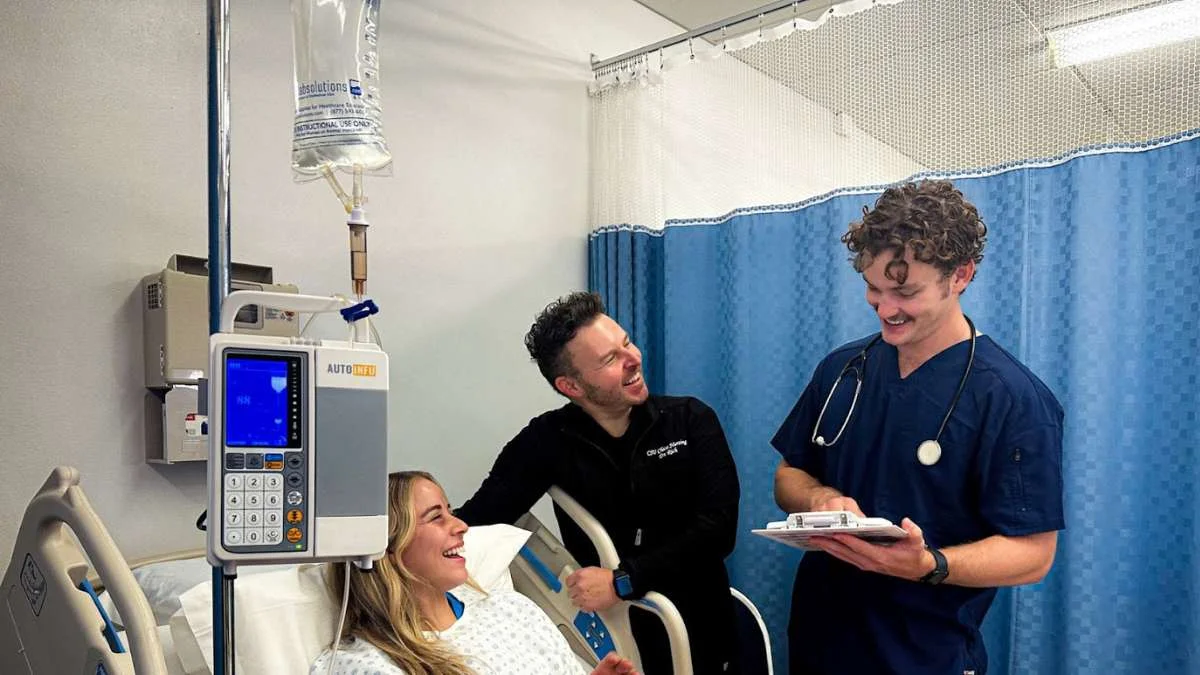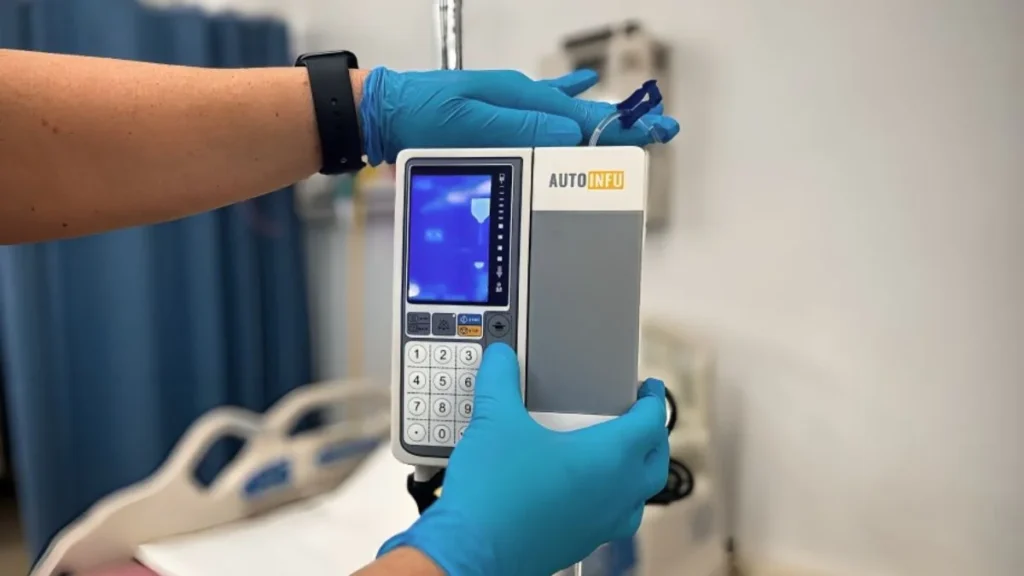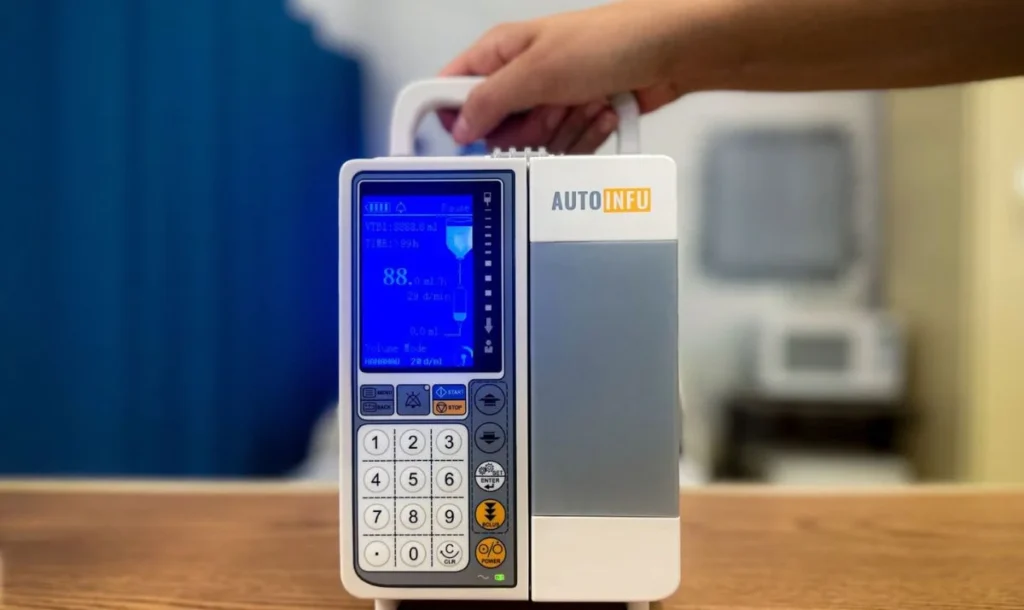TIPS
Home Infusion Pump: An Essential Guide to Safe and Effective Use

Hospitals are often seen as places of necessity rather than comfort, particularly for individuals facing long-term healthcare challenges. For those dealing with acute or chronic conditions, extensive hospital stays may become unavoidable due to the requirement for advanced treatments that utilize specialized devices, particularly infusion pumps. This has driven a notable shift within the healthcare sector as both patients and providers seek alternatives that alleviate the burdens of prolonged hospital care.
In response to the rising demand for patient-centered care, home infusion pumps have gained significant traction. This trend has contributed to substantial growth within the home and specialty infusion market, which now serves over three million patients annually and is valued at approximately $19 billion. As this article explores, home infusion therapy offers various advantages for those in need of ongoing care, setting the stage for a closer look at the mechanisms, types, and selection criteria for these vital medical devices.
Table of Contents
What is a Home Infusion Pump?
A home infusion pump is a specialized medical device designed to deliver medications or nutritional fluids directly into a patient’s bloodstream either intravenously or subcutaneously while they are at home. This technology is invaluable for patients with various acute or chronic conditions requiring ongoing infusion therapy.
Typically, these pumps are provided by licensed home infusion providers, which function as closed-door pharmacies. Such providers must adhere to strict regulations set by state pharmacy boards and meet the standards imposed by third-party health insurance companies. For the safe preparation of compounded sterile products, providers must follow USP <797> standards, which outline necessary cleanliness levels and environmental controls.

Key considerations for USP <797> standards include:
- ISO Class Requirements: Compounding must occur in an environment rated ISO 5 or better, ensuring a sterile setting.
- Beyond Use Dates (BUD): Risk levels dictate the BUD, applying as follows:
- Low-risk: 14 days
- Medium-risk: 9 days
- High-risk: 3 days
Home infusion pumps facilitate the administration of various substances, such as antibiotics, analgesics, chemotherapy agents, hydration fluids, and immunoglobulins. Before transitioning to home care, patients undergo assessments by healthcare experts to ensure they are suitable candidates for this type of therapy, allowing many to avoid extended hospital stays. For further insights on home infusion, visit Autoinfu.
Advantages of Home Infusion Therapy
Home infusion therapy offers several significant benefits for patients with various health conditions. Firstly, it reduces the costs associated with treatment, averaging between $20 and $40 daily, based on the specific home infusion pump employed.
Secondly, patients can blend their recovery with everyday life, allowing them to return to work and engage in regular activities while receiving necessary medical care.
Moreover, the preference for treatment in a home setting adds a level of comfort, as many individuals find receiving therapy in familiar surroundings preferable to being in a hospital. These advantages can vary depending on the type of home infusion pump used and the administration method for the therapy.
Types of Home Infusion Pumps and Administration Modes
Home infusion therapy offers various pumps and administration options for patients, each designed to meet different needs and circumstances.
The IV Push
The IV push method provides rapid intravenous medication administration using a syringe to deliver small doses directly into the patient’s bloodstream. This technique takes only a few minutes, making it a popular choice among patients for its efficiency and simplicity.
Gravity Infusion
In gravity infusion, a medication bag is connected to an IV catheter via a flow regulator tube and suspended from an IV pole. The drug flows into the patient’s vein relying on gravity. Patients can adjust the infusion rate using a dial integrated into the tubing. This method works well for fluids not subject to strict compounding regulations.
Elastomeric Devices (Infusion Ball)
Elastomeric devices are single-use infusion pumps that deliver medications through a flexible balloon mechanism. As the elastomeric balloon expands and contracts, it pushes the drug through the connected tubing. A flow restrictor manages the rate of medication delivery, and infusion starts automatically once the patient activates the connection to the IV line.
Ambulatory Pumps (CADDs)
Continuous Ambulatory Delivery Devices (CADDs) are designed for patients seeking mobility during infusion therapy. These pumps allow for the automatic administration of IV drugs while enabling patients to engage in daily activities. The medication reservoir connects to the pump through flexible tubing, and patients can easily follow on-screen instructions to commence infusion. A typical application of this technology is in chemotherapy treatments at home.
Stationary Home Infusion Pumps
Stationary home infusion pumps resemble ambulatory options but tend to be larger and less portable. These devices are stationary and require connection to an infusion bag via delivery tubing. The caregiver or patient programs the dosing and flow rates, which are then administered automatically. Examples include volumetric pumps, such as the Autoinfu, which can manage high infusion rates of 1000 mL/hour or more.

Selecting the appropriate type of home infusion pump requires careful consideration from patients and healthcare providers, taking into account specific therapeutic needs and lifestyle factors.
Considerations for Selecting a Home Infusion Pump or Administration Method
Medication Integrity
The integrity of the medication is critical when selecting a home infusion pump. This factor pertains to whether a drug is classified as high or low risk. High-risk substances, such as ampicillin, have a limited shelf life of approximately three days and require more frequent deliveries. As a result, they are often administered using elastomeric devices, which are designed for short-term use.
Frequency of Dose Administration
Determining how often a medication needs to be administered plays a significant role in pump selection. For instance, a patient might opt for an elastomeric pump for medications that require administration every eight hours. Conversely, if a medication is prescribed every six hours, a portable ambulatory pump may be preferred to promote mobility and allow the patient to avoid nighttime disturbances.
Financial Considerations
The cost associated with different infusion methods may vary widely. Several factors affect the price, including the type of infusion therapy provider and the specific home infusion pump utilized. Generally, methods involving elastomeric or stationary pumps tend to incur higher expenses compared to more straightforward approaches like gravity feeds or intravenous (IV) push administration, which are less costly.
Patient Preferences
Selecting an infusion method often depends on the patient’s comfort level with the available options. The likelihood of successful infusion therapy increases when patients choose systems that align with their preferences. Many individuals find elastomeric pumps appealing due to their user-friendly nature, while others prefer the rapid administration of intravenous push methods, which offer a quicker solution without the complexities of other devices.
Final Thoughts
The increasing use of home infusion pumps highlights their cost-effectiveness compared to prolonged hospital stays. This approach allows individuals to maintain their daily activities while receiving necessary treatments.
When selecting a suitable home infusion pump, patients need to engage with both their healthcare providers and infusion therapy specialists. This collaboration ensures that they make well-informed decisions tailored to their specific infusion medications or fluids.
By integrating professional guidance into the selection process, patients can seamlessly manage their therapies at home, improving both their quality of life and treatment outcomes. Prioritizing communication with healthcare teams will pave the way for successful home infusion therapy.
Looking for more? Check out our blog for valuable tips.
-

 GENERAL2 months ago
GENERAL2 months agoUncovering the World of кинокрадко: The Dark Side of Film Piracy
-

 GENERAL1 month ago
GENERAL1 month agoUnveiling the Art of преводсч: How Translators Bridge Language Barriers
-

 YOGA1 year ago
YOGA1 year ago4 Person Yoga Poses for Beginners
-

 GENERAL2 months ago
GENERAL2 months agoThe Journey of iamnobody89757: From Anonymous User to Internet Sensation























